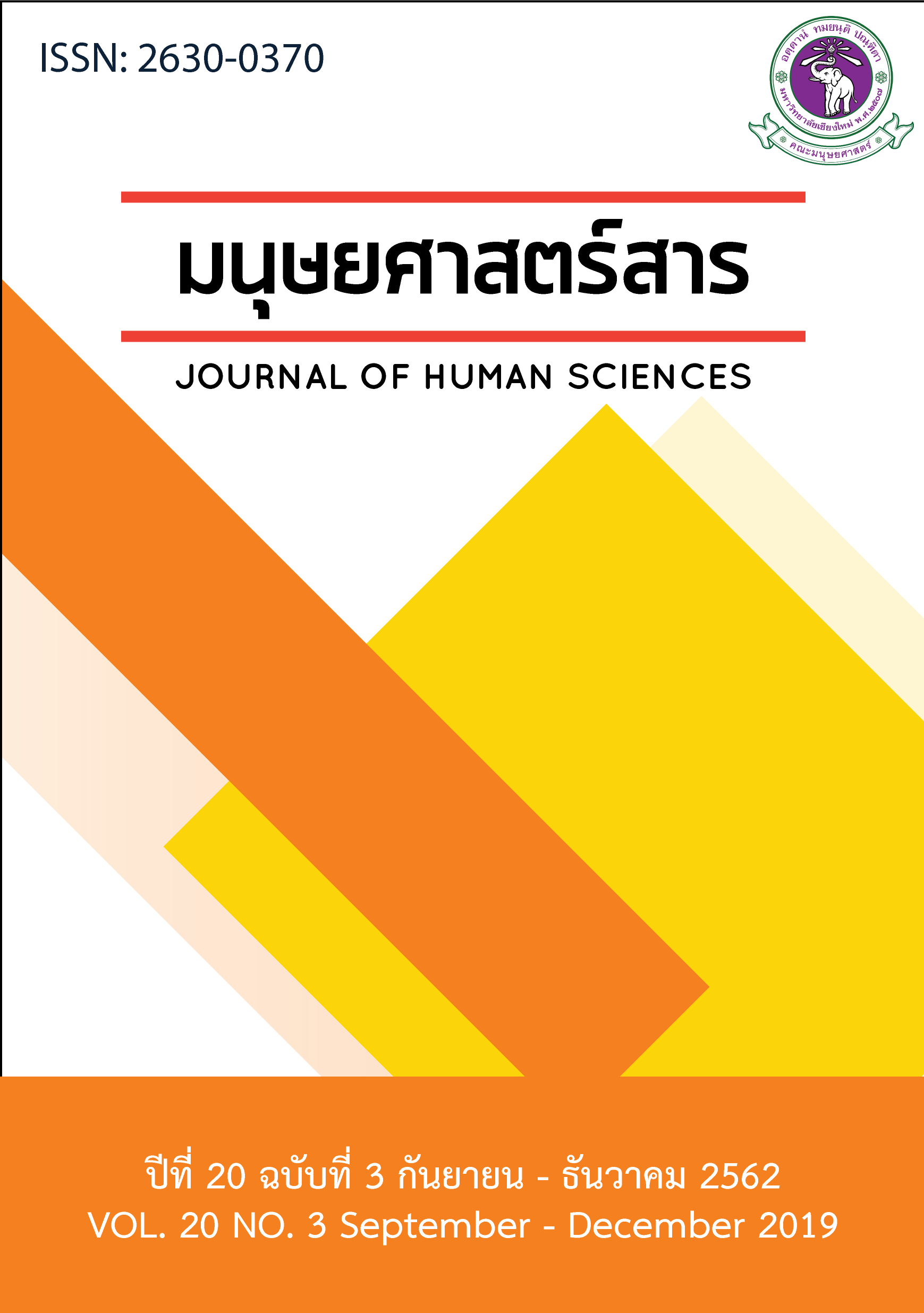ขีดความสามารถในการรองรับด้านจิตวิทยาของแหล่งท่องเที่ยว ในอุทยานแห่งชาติดอยอินทนนท์
Main Article Content
บทคัดย่อ
อุทยานแห่งชาติดอยอินทนนท์เป็นอุทยานแห่งชาติที่มีความสำคัญของประเทศ มีแหล่งท่องเที่ยวที่หลากหลาย เนื่องจากอุทยานแห่งชาติดอยอินทนนท์เป็นพื้นที่อนุรักษ์ ซึ่งพื้นที่จะมีขีดความสามารถในการรองรับนักท่องเที่ยวที่จำกัด ขีดความสามารถในการรองรับด้านจิตวิทยาของแหล่งท่องเที่ยวในอุทยานแห่งชาติดอยอินทนนท์เป็นตัวสะท้อนให้เห็นจำนวนสูงสุดของนักท่องเที่ยวที่แหล่งท่องเที่ยวสามารถรับได้ ภายใต้อรรถประโยชน์สูงสุดที่นักท่องเที่ยวพึงได้รับจากกิจกรรมนันทนาการในแหล่งท่องเที่ยว อย่างไรก็ตามขีดความสามารถในการรองรับด้านจิตวิทยาจะเป็นการศึกษาที่ให้ความสำคัญกับระดับความแออัด ซึ่งผลการศึกษาพบว่า ขีดความสามารถในการรองรับด้านจิตวิทยามีความสอดคล้องกับขนาดของพื้นที่ โดยแหล่งท่องเที่ยวขนาดพื้นที่กว้างมีขีดความสามารถในการรองรับด้านจิตวิทยาสูงกว่าแหล่งท่องเที่ยวที่มีขนาดพื้นที่แคบกว่า ซึ่งสามารถสรุปได้ว่าขนาดพื้นที่มีความสัมพันธ์ต่อขีดความสามารถในการรองรับด้านจิตวิทยา
Article Details
เอกสารอ้างอิง
Department of National Parks, Wildlife and Plant Conservation. (2015). Rainganchabapsomboonkansưksakhitkhwamsamatnaikanrongrapkanchaiprayotdannanthanakannaiphưnthi utthayanhængchat aophangnga Changwatphangnga [Complete Research Report: Carrying Capacity for Recreation in Ao Phang Nga National Park, Phang Nga Province]. Bangkok: Department of National Parks, Wildlife and Plant Conservation.
Department of National Parks, Wildlife and Plant Conservation. (2018). Utthayanhængchatdoi inthanon [Doi Inthanon National Park]. Retrieve from http://park.dnp.go.th/visitor/nationparkshow.php?PTA_CODE=1006
Empun, D., Wannalœt, S., & Ratno, R. (2004). Khumư kanchamnæk khetthongthiaochœngniwet doilakkanchuangchan okatdannanthanakan [Recreation Opportunity Spectrum, ROS]. Bangkok: Tourism Authority of Thailand.
Manning, R.E. & Lawson, S.R. (2002). Carrying Capacity as “Informed Judgment”: The Values of Science and the Science of Values. Environmental Management, 30. 157-168.
Pásková, M. (2003). Změny geografického prostředí vyvolané rozvojem cestovního ruchu ve světle kriticko – realistické metodologie (Changes of Geographical Space Caused by Tourism Development in the Light of Critical Realist Methodology). (Doctorial’s thesis, Faculty of Natural Sciences UK Praha).
Pásková, M. (2008). Udržitelnost rozvoje cestovního ruchu (Tourism Development Sustainability). Hradec Králové: Gaudeamus.
Pásková, M. (2012). Environmentalistika cestovního ruchu (Tourism Environmentalism). Czech Journal of Tourism, 1(2). 77-113.
Saarinen, J. (2006). Traditions of Sustainability in Tourism Studies. Annals of Tourism Research, 33(4). 1121-1140.
Salerno, F., Viviano, G., Manfredi, E. C., Caroli, P., Thakuri, S. & Tartari, G. (2013). Multiple Carrying Capacities from a management-oriented perspective to operationalize sustainable tourism in protected areas. Journal of Environmental Management, 128. 116-125.
Thanakan, N., Chasetmat, S., Em, D., Phitkam, N., Tœmtrakun L., Singhaworawut, S., & Ratkhiri, S. (1998). Khumưphatthanalæ okbæpsingkhwamsaduaknailængthongthiaobæpkanthongthiaochœnganurak [Development and Facility Design in Eco-tourism place]. Bangkok: Forestry Research Center, Kasetsart University.
Zelenka, J., & Kaceti, J. (2014). The Concept of Carrying Capacity in Tourism. Economic Interferences, 16(36). 641-645.
Zelenka, J., & Pásková, M. (2012). Výkladový slovník cestovního ruchu (The Explanatory Dictionary of Tourism). Praha: Linde Praha.


